There’s a wonderful system in Holland where if you buy a weekend train ticket to a major European city, they throw in a hotel more or less for free. Thus it was that, seeing a slow weekend coming up, Maria and I more or less randomly decided to go to Berlin. It meant getting to Amsterdam station ridiculously early on Friday morning, but that was no great hardship because it was the start of Sail 2000, and all the tall ships were in. As we strolled past amongst the other early onlookers, the flower-covered tugs were being warmed up, and dozens of ferries and tour boats were loading up with passengers. The tall ships themselves sat serenely aloof; these were creatures of the high seas, and looked uncomfortable crammed together in Amsterdam harbour amongst the hoi poloi.
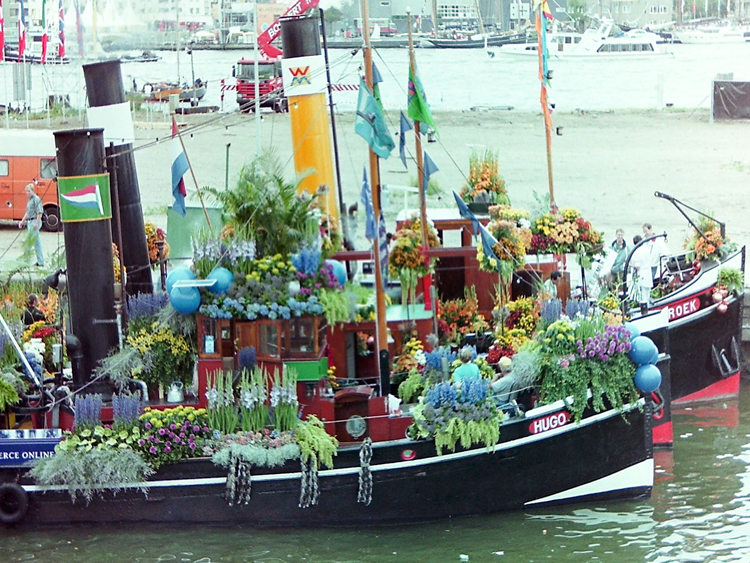
The tugs at Sail 2000 really went to town
Some hours later we poked our noses into our Berlin hotel just long enough to dump our bags, and then headed straight out for the Kurfurstendam. As it happened, there was a big street festival in progress, with hundreds of stalls selling food, beer, jewellery, beer, that sort of thing. At regular intervals along the street were positioned local DJs, including one rather bizarre area where both performers and audience danced in synchronisation on exercise bikes.
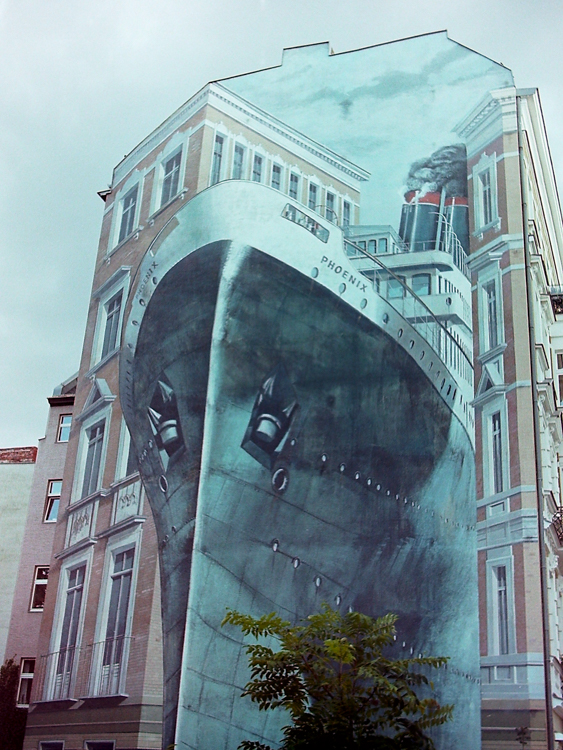
This mural was on a building near the hotel. Its all mural, there are no real windows at all. 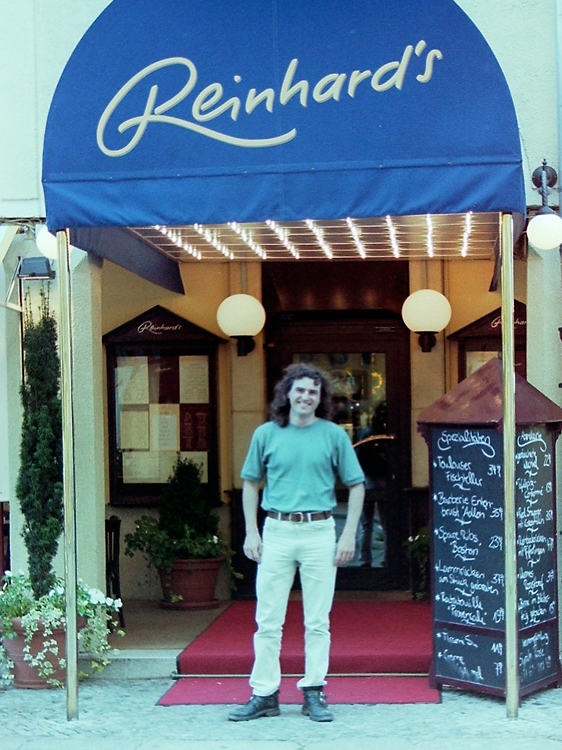
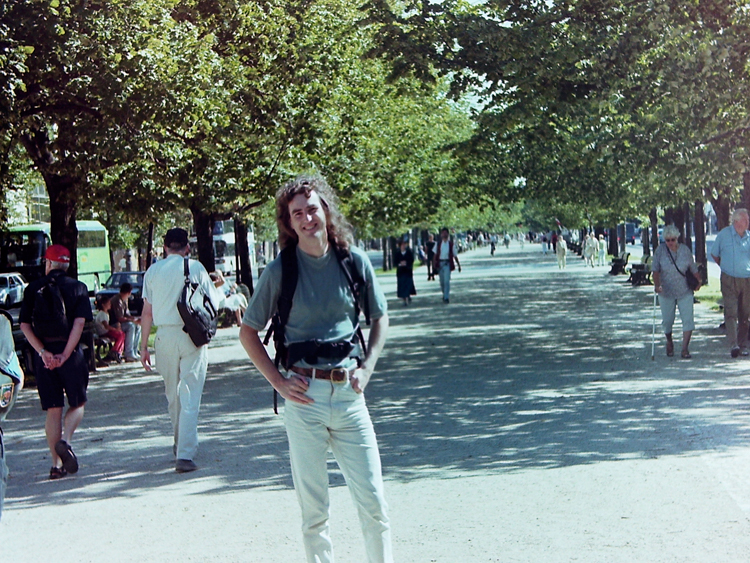
Unter den Linden
Another stall had the traditional fairground test your strength sledgehammer-and-bell apparatus, and we watched as two youths battled it out to get the maximum prize. Vying with one another, they shelled out piles of Deutschmarks, winning armfuls of small toys but always not quite succeeding with the big one, until finally amid much banter and in front of a huge crowd of cheering onlookers, they finally won the big blue teddy bear. Honour satisfied, they randomly picked a pretty girl from the crowd and loaded her up with toys before continuing on their way.
The hotel brochure claimed that they had twenty metres of food at their breakfast bar, and I must say I found no reason to disagree. The breakfast was incredible, and it set us up for the long walk through the Tiergarten (the central park), passing through the Brandenburger Tor into East Berlin and along Unter den Linden. I knew that the Wall used to come through here, but there was absolutely no sign of it; it had been completely erased. The most astounding thing about the Tor these days is the incredible number of tourist buses, parked nose-to-tail for at least a kilometre behind the Gate.
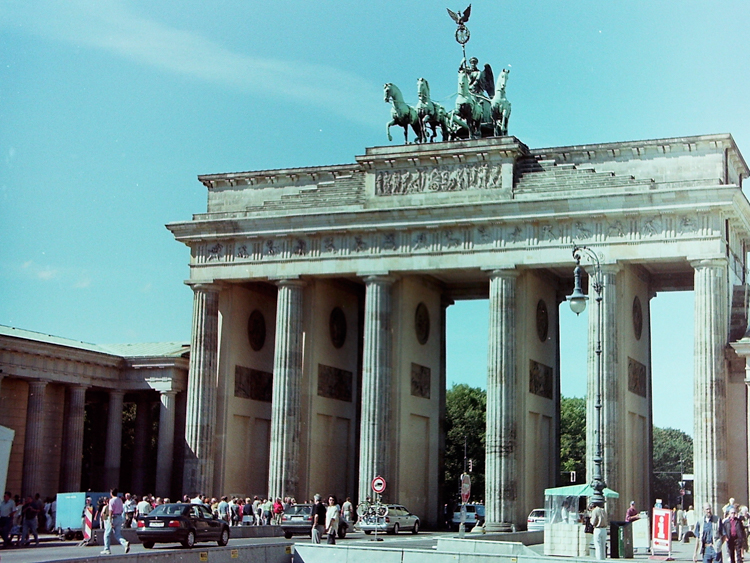
Brandenburg Gate
Once in the East, we headed for the Gendarmemarkt, billed as the most beautiful square in Europe, but although the Academy of Music is a good solid piece of architecture, I’m not sure that it is even in the running. Nevertheless, it is a fine place to sit in the sun with a heverweiss beer.
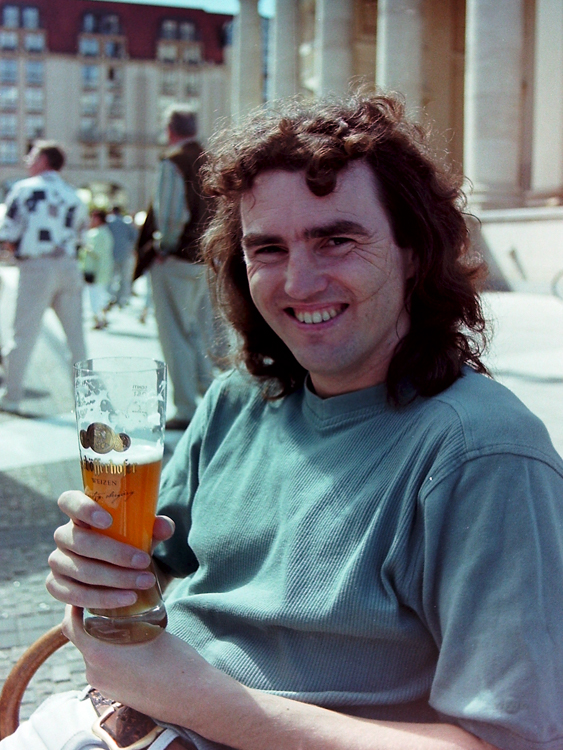
The obligatory picture of Reinhard with a beer. 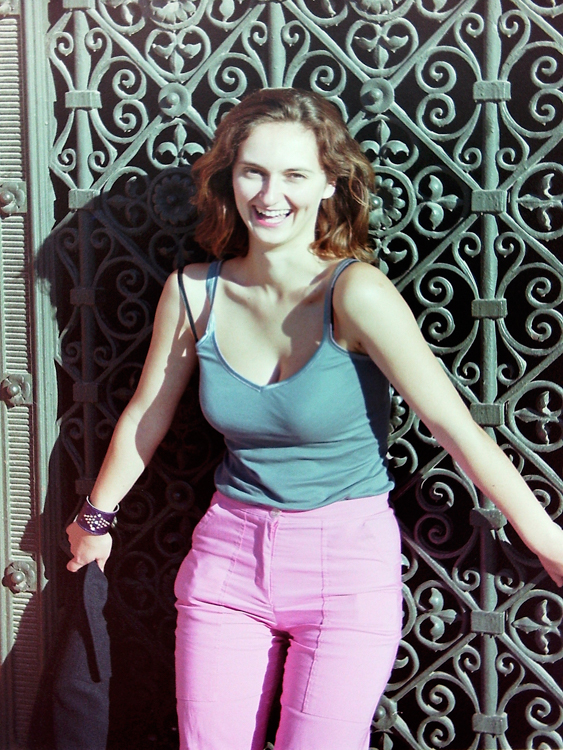
Maria and some ironwork
A short step from the Gendarmemarkt is the Checkpoint Charlie Museum, monument to the Wall years, which is truly engrossing. There is an incredibly harrowing display of escape methods, stories and documentation, vividly highlighting the sheer ingenuity of the human mind. There are beautifully engineered hiding places under cars, in petrol tanks, inside the passenger seat of a mini, inside welding gear. There are also home-made microlights, submarines, and an inflatable canoe powered by a sail constructed from a bed sheet and a couple of hockey sticks. And then there were the tunnellers, aided by helpers, mainly students from the west who were often themselves imprisoned, or shot and killed. The latter reaches of the museum are given over to other struggles around the world, but they don’t begin to approach the sheer desperation and dare-devilry that characterised the years of the Wall.
Outside the museum, we found that much of what used to be East Berlin was closed for repairs, as the authorities make up for years of neglect. Even the Fernsehturm (TV tower), which I was sure would be able to provide us with a panoramic restaurant meal, was being refurbished, and we were getting quite hungry before we discovered a little bierkeller in the twin shadows of the Nikolaskirk towers.
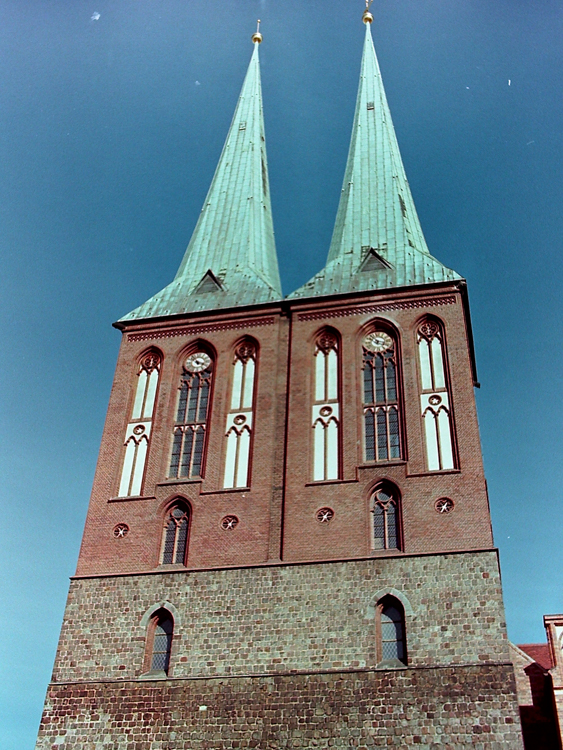
The twin towers of the Nikolaskirk 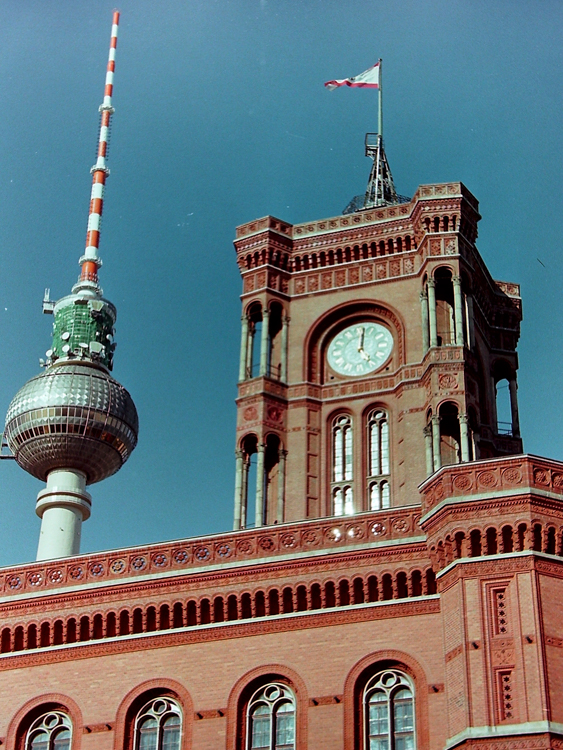
The Fernsehturm peeks over the Rathaus
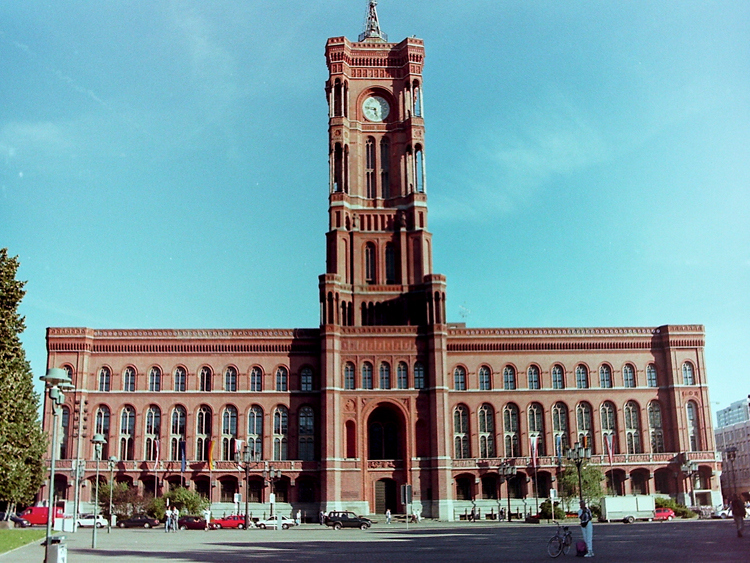
Berlin Rathaus
Inside the church itself, there happened to be an exhibition of Russian gold- and silver-work, which I just couldn’t resist. There were some beautiful engravings, and some truly fantastic pieces (described as “biscuit plates”) that gave the impression of gold baskets with silver napkins carelessly draped across them: but all crafted in stunningly lifelike detail from precious metals. The star of the show, though, was the jewellery. I’m not generally a huge fan of glittering rocks, but these delicate traceries of gold and silver, studded with diamonds, emeralds and amethyst, which could so easily have been gaudy, were so beautifully crafted and so finely worked that they were utterly breathtaking.
Outside again, much of the rest of East Berlin was less attractive. Much of it is taken up with ugly post-war tower blocks, the occasional architectural antiquity looking less like a scattered gem than a lost relic hunkering down under the lowering tonnes of concrete. Even the River Spree conspires against picturesqueness, hemmed in as it is on each side by stark concrete banks, with the occasional reconstruction of a mediaeval wooden bridge only serving to accentuate the problem. Mind you, until recently the Spree was armoured, spiked and alarmed, so it has a lot of past to live down.
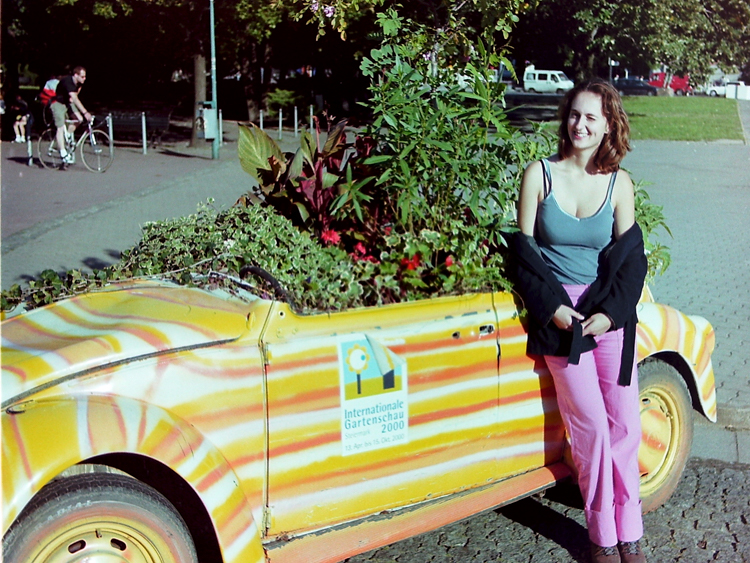
Flower Power
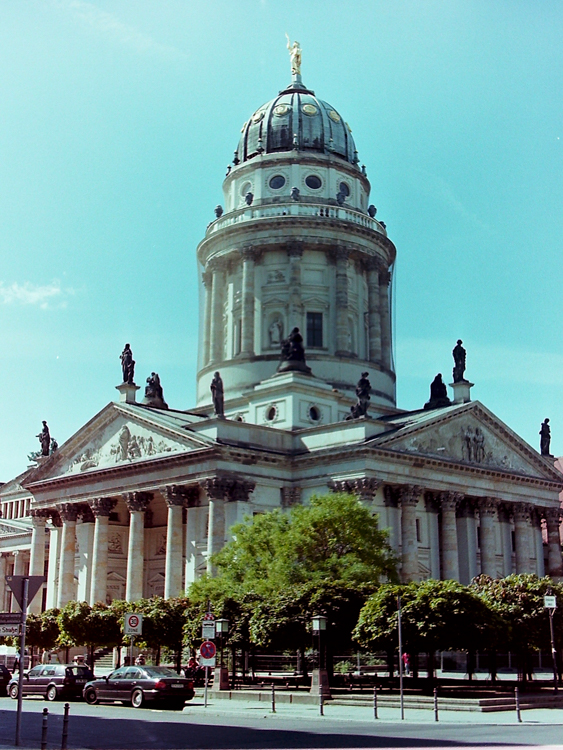
Deutscher Dom 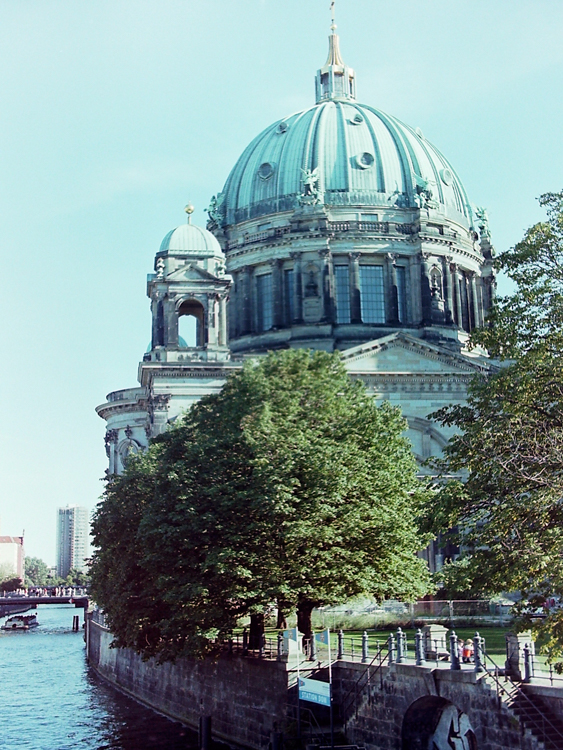
Berliner Dom
The Charlottenschloss, a bijou pad of a hundred rooms or so knocked up for one of the queens, sits in spacious grounds scattered with the odd folly and lake, and sitting in a semi-forgotten corner is a tiny little mausoleum to the long-dead knight and his lady. Each tomb is topped by a figure of the occupant, and although the kings is pretty ordinary, the sculpting on the queen is breathtaking. The way she is lying, draped by a thin silken sheet, you could be forgiven for thinking that she is but resting and in a moment will open her white marble eyes and get on with pruning the roses.
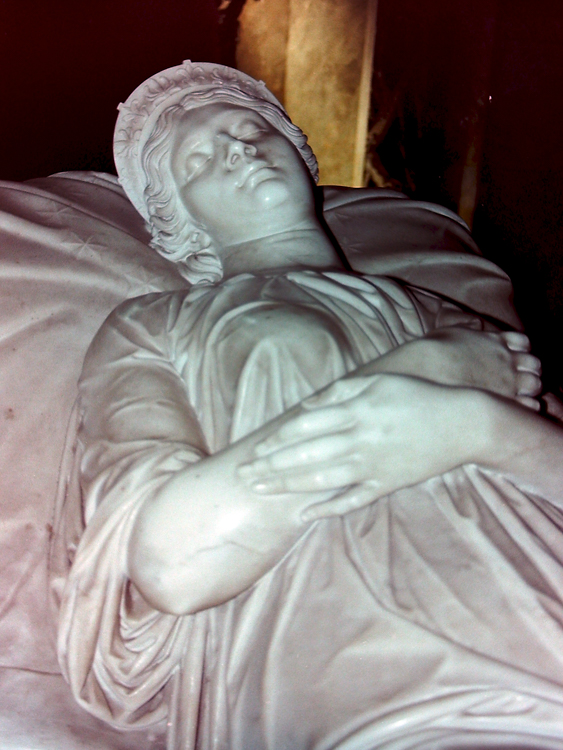
In the mausoleum of Charlottenschloss 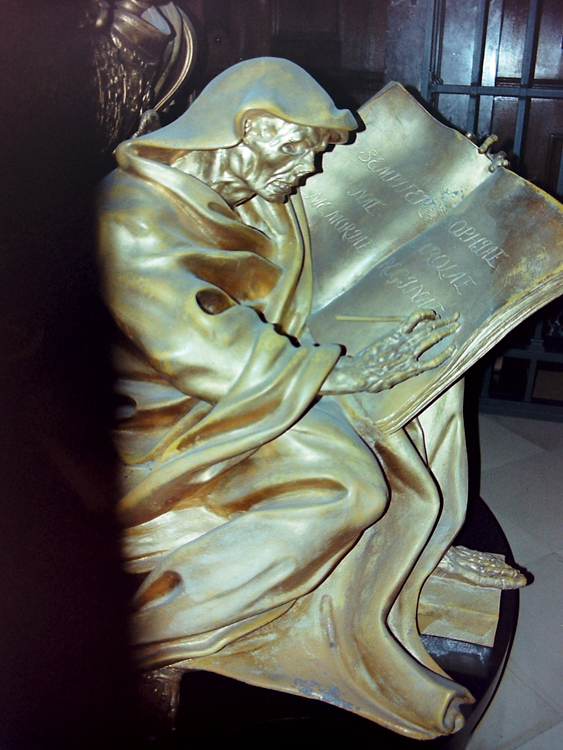
In the Berliner Dom
The Berliner Dom (cathedral) is dominated by its enormous dome, squatting centrally over the cross-shaped building. Inside, the whole thing is one vast open space, and everything that isn’t heavily gilded and painted is carved in relief. There was an organist showing off on the huge organ; particularly impressive was the thunderous James Bond villain piece which brought applause from the slightly stunned crowd. In fact, the whole atmosphere was very touristy, with guides strolling around carrying placards, cameras flashing and people talking.
Much of the cathedral was being restored, repaired or rearranged, so we had a little trouble working out how to get from one end of the building to the other, but eventually we discovered the stairway up to the cupola. It was lined with numerous photographs of the building in various stages of disrepair; the dome has burnt down and been rebuilt at least three times since the 1880s. On the way up there are all sorts of nooks and doorways to explore, and in one place it is possible to emerge onto a narrow ledge clinging to the inside of the dome. Hidden as it is from below, the top of the ledge is scattered with spotlights, microphones and loose knee cushions. I’m not normally bothered by heights, but even I would have had real problems making my way along that tiny strip of stone to change a light bulb, not because of the fearsome drop down to the pews, but because of the curious but overwhelming feeling of vertigo induced by the roof closing in overhead.
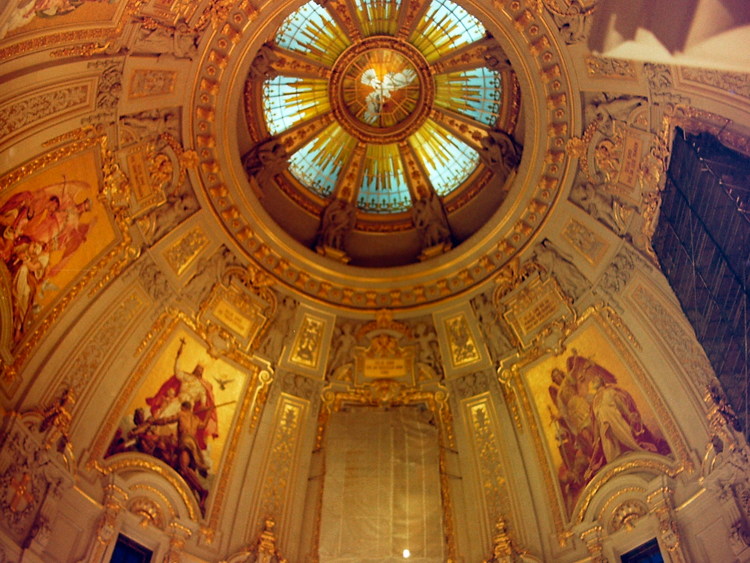
The inside of the Dom dome
A few more tunnels and stairways led us onto the outside of the dome, where the whole of Berlin was spread out before us. The lights twinkled all over the city as the sun edged slowly toward the horizon, the calm of the evening disturbed only by thousands of swooping starlings, and the distant wail of sirens around a small apartment fire in the distance.